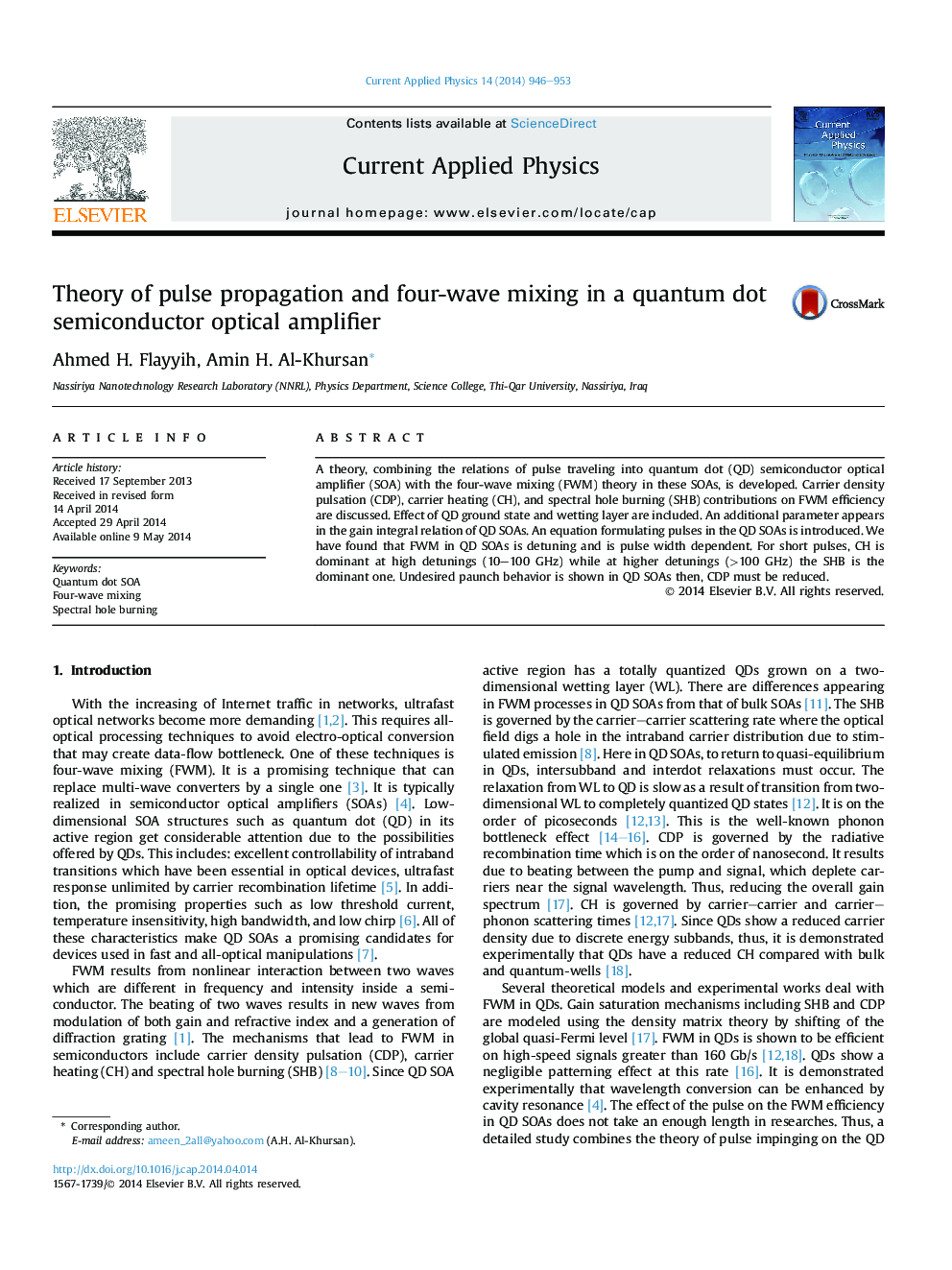| Article ID | Journal | Published Year | Pages | File Type |
|---|---|---|---|---|
| 1786208 | Current Applied Physics | 2014 | 8 Pages |
•A theory combines the pulse traveling into QD SOA with FWM is discussed.•FWM in QD SOAs is pulse width dependent.•For short pulses, carrier heating is dominant at high detuning (10–100 GHz).•At higher detuning (>100 GHz) the spectral hole burning is dominant.
A theory, combining the relations of pulse traveling into quantum dot (QD) semiconductor optical amplifier (SOA) with the four-wave mixing (FWM) theory in these SOAs, is developed. Carrier density pulsation (CDP), carrier heating (CH), and spectral hole burning (SHB) contributions on FWM efficiency are discussed. Effect of QD ground state and wetting layer are included. An additional parameter appears in the gain integral relation of QD SOAs. An equation formulating pulses in the QD SOAs is introduced. We have found that FWM in QD SOAs is detuning and is pulse width dependent. For short pulses, CH is dominant at high detunings (10–100 GHz) while at higher detunings (>100 GHz) the SHB is the dominant one. Undesired paunch behavior is shown in QD SOAs then, CDP must be reduced.
